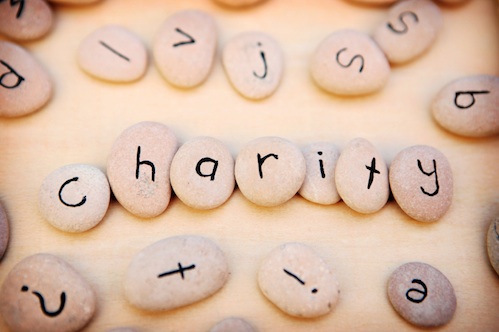News
Why gifting to charity this Christmas could make financial sense

As well as allowing charities to continue their work, gifting money to these worthwhile schemes can also provide donors with valuable tax incentives.
If you’re a UK resident and a taxpayer, there are tax benefits for both the charity (as it can claim 25% gift aid back from HMRC), and for workers in giving up some of your earnings.
In fact, many people don’t appreciate the benefit of gift aid, especially higher rate taxpayers, Kay Ingram, director of public policy at LEBC, says.
While the benefit of gifting to charity for basic rate taxpayers may not be as pronounced as for higher or additional rate taxpayers, those on the cusp of the £45,000 threshold (£43,000 in Scotland) should take note.
For higher or additional rate taxpayers, by gifting money to charity, you’re essentially widening your basic rate band, therefore paying more of your tax at the lower band, reducing tax at the higher rate.
As an example, someone earning £50,000 who gifts £2,000 to charity would see their basic rate band threshold climb from £45,000 to £47,000. Rather than pay the 40% tax rate on earnings over £45,000, they would only pay this rate on earnings above £47,000. This would save them £400 in tax.
As the charity gains 25% gift aid, the charity would receive a total £2,500 donation which would cost a higher rate taxpayer £1,600 net.
In simple terms, a higher rate taxpayer who gives £100 to charity, enables the charity to receive £125, though it’s only cost the taxpayer £75 as they’ve gained £25 tax relief (£70 and £30 respectively for an additional rate taxpayer).
But, simple cash donations to people on the street or donating coins into a charity box won’t attract the same benefits.
Gift aid donations also help reduce taxable income for the purpose of the £100,000 taxable income threshold, Ingram explains, when the taxpayer starts to lose the personal tax allowance and the threshold for child benefit clawback of £50,999.
“So charitable giving can offer additional benefits to those just over these thresholds,” she says.
If gifts have been made in earlier tax years without claiming gift aid, claims for relief can be backdated for up to four years using the P810 from HMRC.
While there are no limits on amounts which can be given to charity, for backdated claims, your donations will qualify as long as they’re not more than four times what you have paid in tax in that tax year (6 April to 5 April).
Here, HMRC will send you a refund or your tax code may be adjusted.
Sarah Ghaffari, ICAEW technical manager, SME business tax, adds: “Christmas time is the perfect time to sit down and complete your online self-assessment ahead of the 31 January deadline. Many people often do not realise when they complete their self-assessment that they could be saving money by taking advantage of tax reliefs. For example, charitable giving, if you keep records showing the date, the amount and which charities you have donated to you can reclaim income tax on the sum. Even if you used gift aid, higher rate relief may still be yours to claim.”
If people leave legacies to charity, that’s also tax exempt. By leaving 10% of your estate to charity, the rate of inheritance tax reduces from 40% to 36% on the balance.